The pandemic impacted domestic and international travel in unprecedented ways, whether that travel was for work or for leisure. Travel became more complicated than ever before, with inconsistent and ever-changing entry restrictions related to an itinerary, COVID-19 vaccination status, testing, and quarantine requirements. Stories of people being trapped for weeks or months in foreign countries and citizens banned from returning to their homes were not unusual. As these rules are increasingly relaxed, travel is roaring back to a “new normal”. But what does the risk landscape look like now? Can organisations be assured that using their pre-pandemic travel policies and procedures are enough to keep their workforce safe?
Apart from travel related restrictions, the social and economic toll of the pandemic has negatively affected the overall security environment, meaning that previously ‘comfortable’ destinations pose additional risks. Moreover, the incidents of severe weather incidents and natural disasters are on the rise. Comparing our year-on-year alerts data showed an 80% increase of highest severity alerts in this category.
Staying up to date is critical. Rules and requirements are still changing; organisations must remain agile. Furthermore, organisations need to be aware of the different ways individuals have adapted to the uncertainties of travelling during COVID-19.While many have been resilient and are able to handle constantly shifting threat landscape, others remain anxious and are reluctant to travel. One key challenge for many global businesses, is addressing this anxiety, whilst building a safe and sustainable travel strategy that complies with restrictions and ensures business continuity.

Addressing travel anxiety using digital tools
Demonstrating that your employees are supported by a robust network when they are away from home will help relieve some of the anxiety about the uncertainty of travel. Hence, receiving real-time information as well as details of required procedures, (e.g. rules by destination, visa, testing and quarantine requirements) is a must. Digital tools can provide rapid updates to travellers about such changes. International SOS’ COVID Trip Planner, enables organisations navigate the complexities by providing their workforce with up-to-date information about their destination.
Digital tools can also help keep your workforce informed in the event of an emergency. Having a centralised App enables your workforce to gain accurate and timely information on their location. Access to a portal where managers can communicate with their workforce in critical moments following an incident should be in your travel risk management policies so that you can quickly determine their safety and wellbeing.
Complying with the standards
The travel landscape has evolved to introduce new standards which provide organisations with important guidance to protect their workforce. The ISO 31030 standards provide a structured approach to the development, implementation, evaluation, and review of a travel risk management programme as well as the assessment and treatment of travel risks.
Organisations now must assess their travel risk management programme against the ISO 31030 guidance to ensure that their travel arrangements remain agile.
Implementing a sustainable travel strategy
Clear and up-to-date travel policies which are regularly reviewed are required to maintain a safe travel experience. Access to dedicated experts can be an efficient way to develop a sustainable approach to travel risk management. Over the past 35 years, International SOS has been at the core of supporting organisations’ travel risk management plans. Our health and security experts are on hand to guide your organisation in understanding the standard’s core components, assessing the risks impacting your workforce and finally, integrating these into your existing travel risk management programme to ensure compliance.


